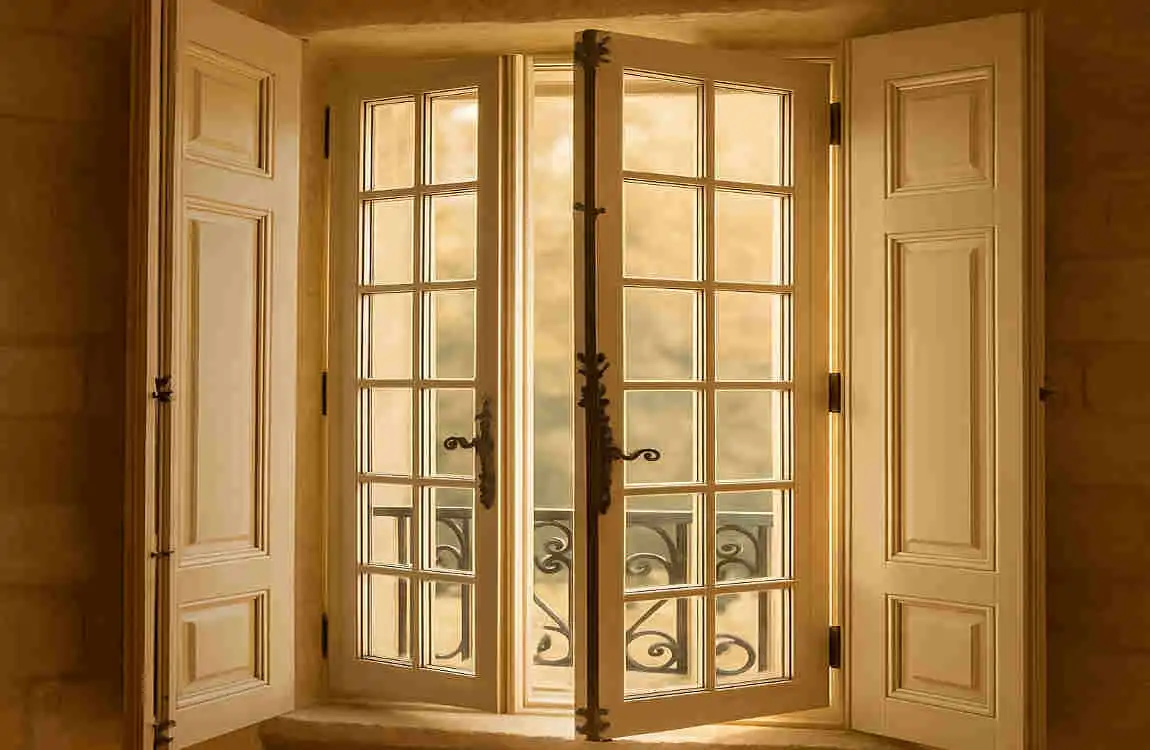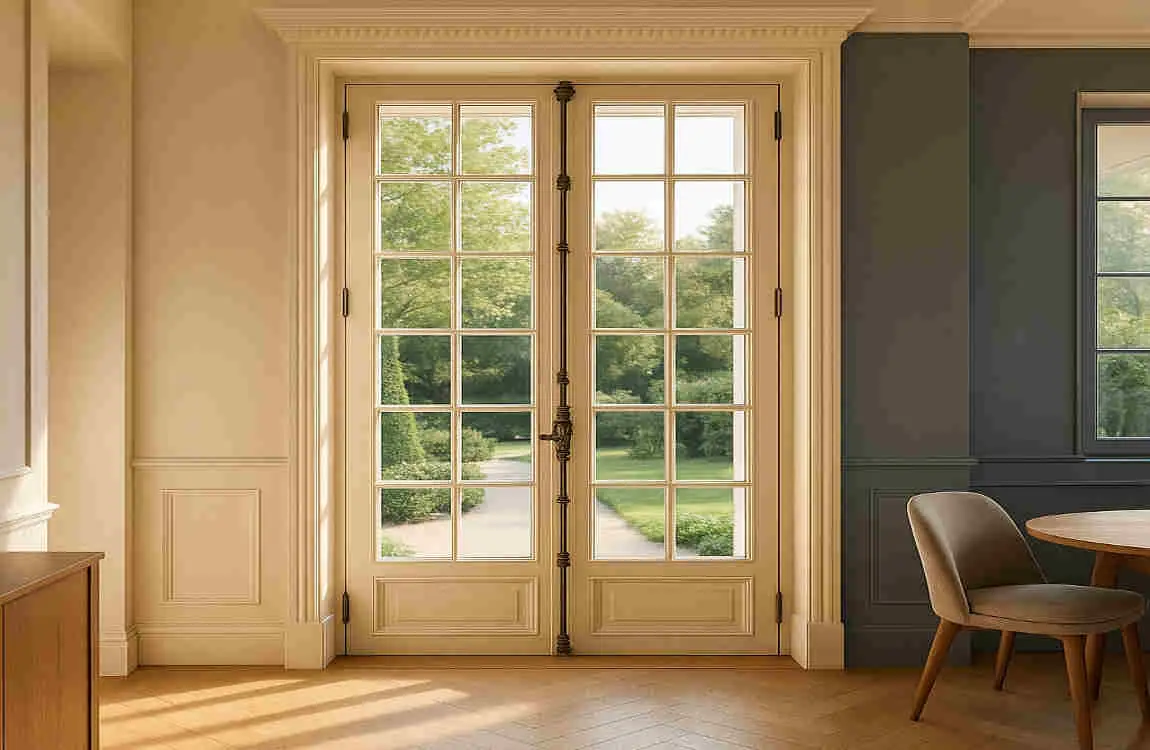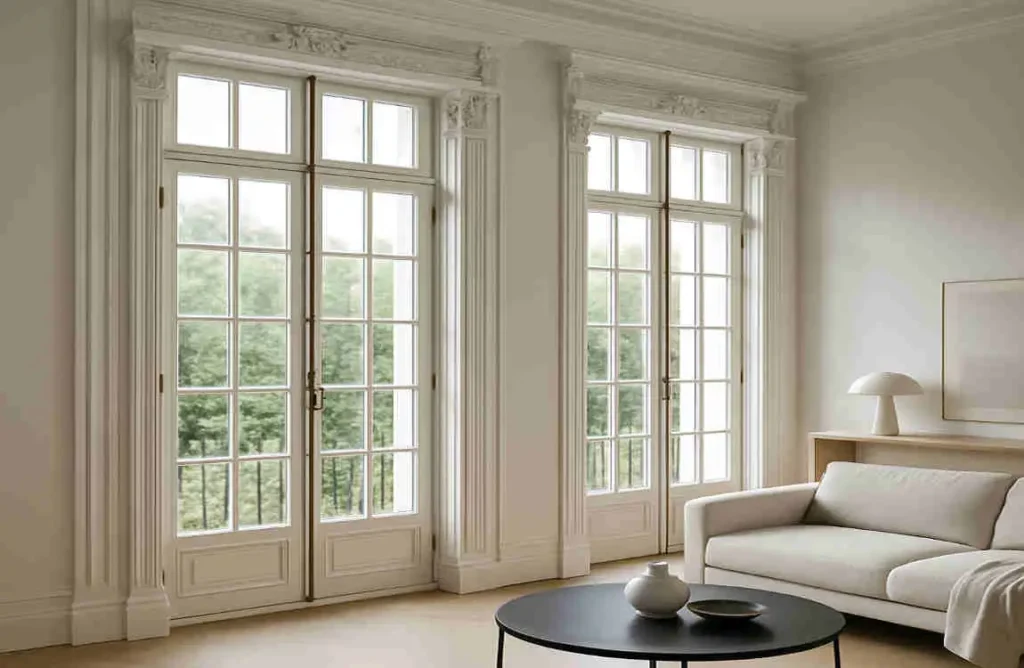Windows are often called the eyes of a home. They let light pour into our spaces, frame our views to the outside world, and play a critical role in the overall design of our homes. Among the many window styles available, “a window in French“ stands out as a timeless, elegant option that continues to captivate homeowners and designers alike.
What Is “A Window in French”?

Before we explore the finer details, let’s start with the basics: What exactly is “a window in French”?
Definition and Distinction
A “window in French” refers specifically to French windows, which are large, double-paned windows that operate as doors. They open outward or inward, typically from the center, creating a seamless transition between indoors and outdoors. Unlike standard windows that slide vertically or horizontally, French windows often resemble doors but maintain the aesthetic of a window.
It’s essential to differentiate French windows from French doors. While the two share similarities, French windows are characterized by their tall, narrow panes and are often used in designs to emphasize natural light and elegance.
Anatomy of a French Window
French windows have distinct design elements that set them apart:
- Panes: Divided into smaller sections, often using muntins or grilles.
- Frames: Typically made of wood, aluminum, or vinyl, framing the glass.
- Casements: Hinged on the sides, allowing a whole opening.
- Operation: Opens inward or outward from the center, offering flexibility in design.
Cultural and Architectural Origins
French windows can be traced back to the 16th and 17th centuries in France, during the Renaissance. At that time, symmetrical designs, large windows, and open spaces were in vogue. French windows became a hallmark of this era, blending functionality with beauty. Over time, this style spread across Europe and beyond, becoming a global design staple.
History of A Window in French Style
French Renaissance Roots
The origins of French windows date back to the French Renaissance (15th–17th centuries), a period marked by architectural innovation and elegance. During this time, designers sought to bring more light into homes, which were often dark and enclosed. The invention of large, symmetrical windows made spaces feel airy and sophisticated.
Symbol of Elegance
Historically, French windows have been a symbol of luxury and refinement. They were often found in castles, manors, and estates, symbolizing wealth and grandeur. Their ability to connect the indoors and outdoors made them particularly popular in homes with gardens or scenic views.
Evolution Over Time
In the centuries that followed, French windows evolved to accommodate a range of architectural styles. They migrated to colonial homes, European villas, and eventually modern suburban houses, proving their versatility. Today, they’re a staple in both traditional and contemporary designs, blending history with innovation.
Design Features of French Windows

French windows are admired for their distinctive design elements, which seamlessly blend aesthetics and functionality. Below, we’ll explore the key features that make them unique.
Materials Used
French windows can be crafted from various materials, each with its benefits:
You may also read (bader house where modern meets tradition).
- Wood: A classic choice for traditional homes, offering warmth and charm.
- Aluminum: Lightweight and durable, ideal for modern designs.
- Vinyl: Low-maintenance and budget-friendly.
- Fiberglass: Energy-efficient and resistant to weather changes.
Frame Styles
French windows are recognized for their stylish frames and panes. Common options include:
- Divided Panes: Smaller sections of glass separated by muntins, offering a vintage look.
- Casement Hinges: Hinged openings that swing outward or inward.
- Double Casement: Two panels opening from the center for maximum ventilation.
Sizes and Shapes
French windows are typically tall, narrow, and floor-to-ceiling, making them perfect for maximizing light. However, they can also be customized for smaller openings. Their versatility allows them to suit various architectural needs.
Decorative Elements
Adding decorative touches can enhance the charm of French windows:
- Shutters: Wooden or metal shutters add a rustic or classic vibe.
- Window Boxes: Perfect for flowers, adding a touch of nature.
- Ironwork Grills: A nod to European designs, adding security and style.
Benefits of Installing A Window in French
Enhanced Natural Light
One of the standout benefits of French windows is their ability to flood spaces with natural light. The large glass panes make rooms brighter and more inviting, reducing the need for artificial lighting.
Seamless Indoor-Outdoor Connection
French windows create a smooth transition between interiors and exteriors. They’re perfect for opening up patios, balconies, or gardens, making your home feel more connected to nature.
Aesthetic Appeal
There’s no denying that French windows are visually stunning. They add elegance, timelessness, and a sense of spaciousness to any home.
Energy Efficiency
Thanks to modern advancements, French windows can now feature energy-efficient glazing. Double or triple-pane windows with low-emissivity glass reduce heat transfer, keeping your home comfortable throughout the year.
Increased Home Value
Installing French windows can enhance your home’s curb appeal and increase its resale value. Their classic style and functionality make them highly desirable among buyers.
Popular Trends and Modern Adaptations
French windows have stood the test of time, but that doesn’t mean they haven’t evolved. Here are some of the exciting ways they’ve adapted to modern tastes:
Slimmer Frames
Modern designs emphasize sleek, minimalist aesthetics. French windows with slim aluminum frames are perfect for contemporary homes.
Smart Technology
Imagine opening your French windows with the touch of a button! Smart home integration has made automated French windows a reality, combining style with convenience.
Soundproof and Energy-Efficient Glazing
Today’s French windows can feature soundproof glass, making them perfect for urban environments. Energy-efficient glazing is another popular upgrade that reduces energy costs while maintaining comfort.
How to Incorporate A Window in French into Your Home Design
If you’re ready to embrace this timeless style, here are some tips to make it work for your home:
Choose the Right Style
Consider your home’s architecture. French windows work beautifully in modern farmhouses, contemporary spaces, and traditional homes alike.
Placement Tips
Maximize natural light by placing French windows in areas that face gardens, patios, or scenic views.
You may also read (how to remove framed windows with screens easy home guide).
